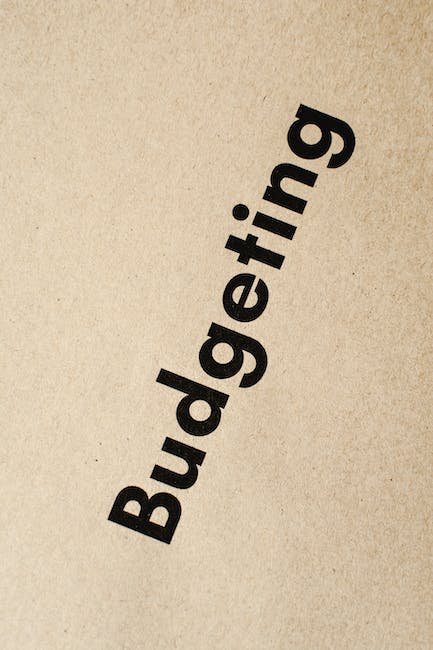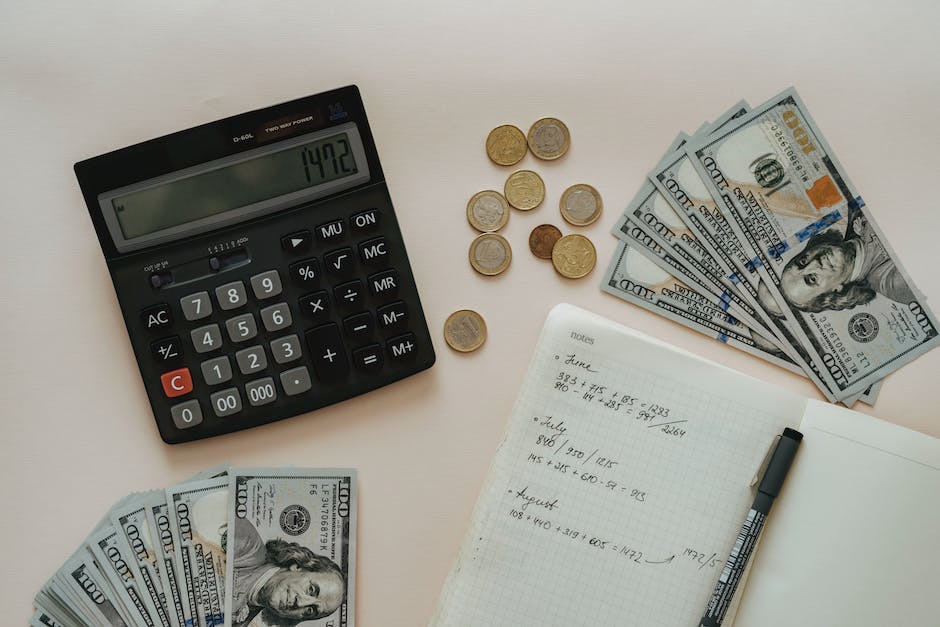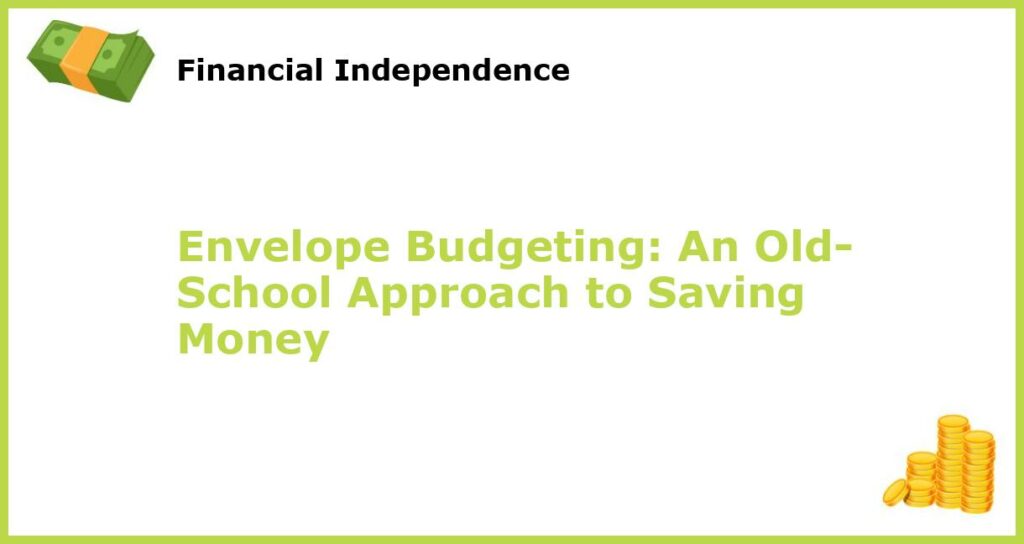Are you tired of feeling like your money is slipping through your fingers? Do you want a simple, effective system for managing your finances? Look no further than envelope budgeting! While it may seem like an old-school approach, envelope budgeting can still be a powerful tool for staying on top of your finances and achieving your financial goals.
What is Envelope Budgeting?

Envelope budgeting is exactly what it sounds like: a budgeting system that involves using physical envelopes to manage your money. First, you determine your monthly expenses and designate an envelope for each category. You might have envelopes for housing expenses, utilities, transportation, groceries, and personal spending, for example. Then, you put the amount of cash that you’ve allotted for each category into its corresponding envelope. As you spend throughout the month, you use the cash in each envelope to cover your expenses.
One of the biggest benefits of envelope budgeting is that it helps you stay on track with your spending. When you have a finite amount of cash to cover your expenses for the month, you’re less likely to overspend than if you just swipe your debit or credit card for everything. Envelope budgeting also helps you prioritize your spending by giving you a clear picture of where your money is going. Plus, envelope budgeting offers a hands-on, customizable approach to managing your finances that many people find more effective than digital budgeting apps.
How to Get Started with Envelope Budgeting

Getting started with envelope budgeting is easy. First, determine your monthly expenses and designate an envelope for each category. Common categories include housing expenses, utilities, transportation, groceries, and personal spending. Then, put the amount of cash that you’ve allotted for each category into its corresponding envelope. As you spend throughout the month, you’ll use the cash in each envelope to cover your expenses.
However, before starting your envelope budget, you need to determine an overall budget. This means figuring out how much money you have coming in each month and deciding on a plan for where it will be distributed. Prioritize payments such as bills, debt, or groceries. You might also set aside money for savings or emergencies. Once you’ve determined these categories and how much money goes into each of them, you can then prepare your envelopes.
How to Stay on Track with Envelope Budgeting

Staying on track with envelope budgeting requires discipline and consistency. Make sure to regularly update your envelopes as you incur expenses and to resist the temptation to dip into envelopes designated for other categories. You can also review your spending at the end of each month to see where you can make adjustments for the next month. Be accountable to yourself, and remember that envelope budgeting is a tool to help you take control of your finances.
Envelope Budgeting vs. Digital Budgeting

A common question when it comes to envelope budgeting is, “Wouldn’t it be easier to just use a digital budgeting app?” While digital budgeting apps can be convenient, envelope budgeting offers a hands-on approach to managing your finances that many people find more effective. With envelope budgeting, you have a physical reminder of how much money you have left to spend in each category, which can help prevent overspending. Unlike with digital tools, you won’t need to navigate spreadsheets or enter every transaction manually. However, if you prefer to use a debit or credit card for certain expenses, you can set up online envelopes or use digital tools to supplement your physical envelopes.
Adapting Envelope Budgeting to Your Lifestyle

One of the great things about envelope budgeting is that it’s customizable to your lifestyle. If you have irregular income, for example, you can adjust your envelope budgeting system to accommodate for lower or higher months. This might mean allocating more money to your buffer envelope, which is designated for unexpected expenses. You can also adapt your envelopes to fit your individual needs. If you spend more on entertainment each month, for example, you might designate a larger envelope for this category.
Envelope Budgeting for Families

Envelope budgeting can be a valuable tool for families. By involving your spouse and children in the process, you can teach your kids about the value of money and instill good spending habits from a young age. Plus, envelope budgeting can help prevent conflicts over money by giving everyone a clear understanding of the family’s financial situation. Consider involving your children in the decision-making process, such as allowing them to choose which envelope to allocate their allowance or helping them save for a specific goal.
Envelope Budgeting for Couples
For couples, envelope budgeting can be a powerful tool for maintaining a healthy financial relationship. By working together to set goals and designate envelopes for different categories, couples can reduce conflicts over money and build a stronger financial foundation for their future. Plus, envelope budgeting can help couples stay on track with shared financial goals like saving for a down payment on a house or planning for retirement. It’s important to remember that transparency is key when it comes to finances in a relationship, and envelope budgeting can be an effective way to ensure accountability and clarity in your finances.
Pitfalls to Avoid with Envelope Budgeting
While envelope budgeting can be an effective system for managing your finances, there are some common pitfalls to avoid. One is not accounting for irregular expenses like car repairs or medical bills. To avoid this, make sure to keep a buffer envelope for unexpected costs. Another pitfall is overspending in one category and taking money from another envelope to cover it. To avoid this, stick to your budget and adjust for the next month if necessary. It’s also important to remember that envelope budgeting may not work for everyone. If you find yourself struggling to use the system or consistently overspending, you may need to consider other budgeting methods.
Envelope budgeting is a time-tested system for managing your finances that offers a hands-on, customizable approach to budgeting. By getting started with envelope budgeting and avoiding common pitfalls, you can take control of your finances and reach your financial goals.







